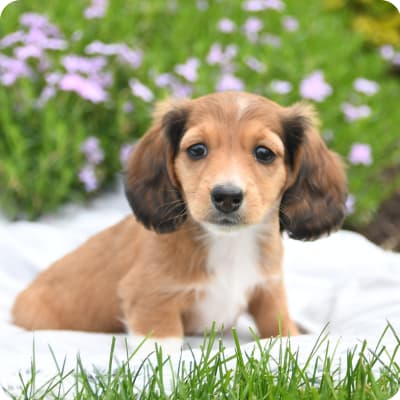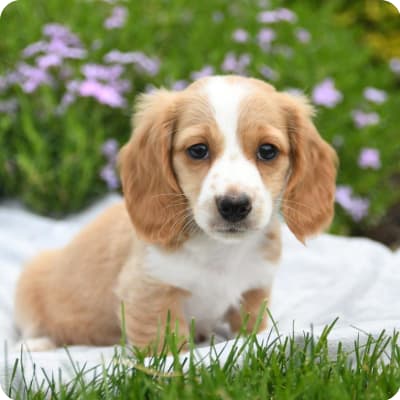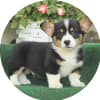Miniature Dachshund Puppies

The Affectionate and Loving Miniature Dachshund
This miniature version of the Dachshund is just as cute and recognizable as its bigger brother. With it's squat legs and long body earned it the nickname "weiner dog." The miniature version is ideal for city dwellers and their loveable personality makes them a great companion.
Miniature Dachshund At a Glance




Miniature Dachshund At a Glance
- Size: 5"-6", 7-11 lbs.
- Lifespan: 12-16 years
- Energy Level: medium
- Coat: Can be short and smooth, longhaired, or wirehaired
- Shedding: moderate
- Hypoallergenic: No
- Dog Group: Hound
- Common Nicknames: Wiener Dog, Doxie
Miniature Dachshund Breed Guide
Learn More About Miniature Dachshunds


